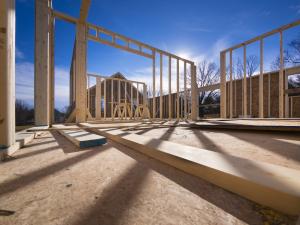
The buildings and construction sector accounted for 36% of final energy use and 39% of energy and process-related carbon dioxide (CO2) emissions in 2018. According to the Intergovernmental Panel on Climate Change, building materials including steel, cement and glass emitted over 2.2 Gigatonnes of Carbon dioxide equivalent, in 2018 alone. This is more than twice the amount that was reported for aviation during the same year. Between 1990 and 2019, global CO2 emissions from buildings increased by 50%.
The rise in construction and building will not stop any time soon: urbanization is one of the global demographic “megatrends” and the share of the world population in urban areas is projected to increase from 55% today to 68% by 2050. Cities are hotspots of the global carbon cycle, with considerable fossil fuel-related CO₂ emissions from electricity consumption, transportation, residential and commercial buildings. In fact, global GHG emissions from buildings amount to the equivalent of 21% of global GHG emissions. Of this, 18% are embodied emissions from the production of cement and steel used in buildings.
It is therefore imperative to look for available and sustainable alternatives. Wood is a proven solution and will be key for the low carbon construction in the future. Trees absorb carbon dioxide from the atmosphere which is stored during the entire lifespan of the wood, including when it is used for buildings.
This was highlighted by the 5 October 2022 UNECE/FAO Impulse Lab on “Trees – Nature’s technology for climate-proof building“, held during the 83rd session of the UNECE Committee on Urban Development, Housing and Land Management in San Marino. Panellists from government institutions, forest research, finance, urban green economy management and architects stressed the urgent need to reduce the carbon footprint of the building and construction sector.
Plenty of sustainably grown wood is available for construction. It is one of the best performing materials in terms of carbon footprint at all stages of the building phases and beyond, as the carbon is only released when the wood is burned or rots.
Cities have an important role to play in reducing global carbon emissions. In fact, cities could become important carbon sinks with the increased use of low carbon or carbon negative materials in favour of energy intensive options. Faced with the urgency of reducing the carbon footprint of the building sector, constructing with more wood will require systematic cross-sectoral thinking and strengthened knowledge and innovation, capacities and even legislative or financial incentives.
When sustainably sourced and managed, renewable forest and wood products offer unique possibilities to contribute to climate action and to build more sustainable and future-proof cities.
For more information about the event: https://unece.org/info/Forests/events/370195

